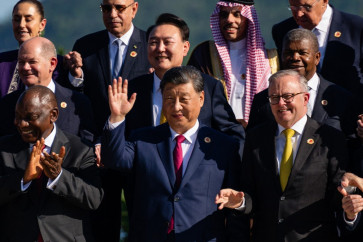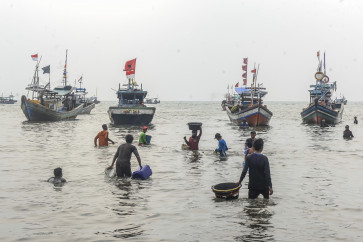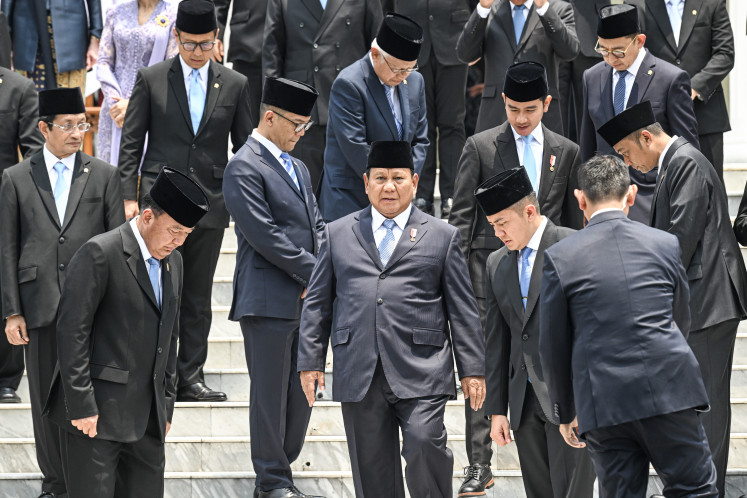Popular Reads
Top Results
Can't find what you're looking for?
View all search resultsPopular Reads
Top Results
Can't find what you're looking for?
View all search resultsBatik with a twist in West Java
Given the distance separating Tasikmalaya from more vibrant batik production centers in Central Java, it isn’t surprising batik makers in this area of West Java invented their own batik designs
Change text size
Gift Premium Articles
to Anyone
G
iven the distance separating Tasikmalaya from more vibrant batik production centers in Central Java, it isn’t surprising batik makers in this area of West Java invented their own batik designs.
Japanese influence: Japanese-influenced batik, called Hokokai, tends to have broad swaths along its lining. Retno K. Djojo
However, Agnesa, who has run a batik factory and boutique for close to 30 years, will not take kindly to those claiming batik from Tasik is off standard and frivolous.
“Tasikmalaya has its own pakem [unique and standardized batik motifs],” she said when interviewed in her Tasikmalaya shop.
While pointing to a green batik adorned with cobweb and floral motifs and another bright red piece with bamboo and bird motifs, she added that “these are the standard designs of Tasikmalaya, which have been very popular until now”.
Her boutique, which stocks an array of hand drawn batik as well as printed products, highlights that Tasikmalaya batik makers have long embraced a freer style of batik design and are no longer bound by the traditional patterns from Yogyakarta or Solo.
The diversity of flora and fauna in Tasikmalaya’s rural areas are a rich source of inspiration for batik makers.
By drawing inspiration from nature, Tasikmalaya batik makers have made a significant contribution to diversifying batik motifs, in the same way artists from Pekalongan in Central Java have, with Dutch settlers trying their hand at crystallizing their inspiration on batik cloth.
Fascinated by the exuberance of tropical flowers in their adopted land, Pekalongan batik makers drew bouquets of flowers in lively colors, hence the name buketan for this type of batik design.
Batik from Lasem, influenced by the Chinese, as seen by motifs of phoenixes and chrysantheniums, came into existence when people from Chinese descent added their cultural touch to batik, while people of Arabic descent incorporated calligraphy in their version of batik.
The arrival of the Japanese army during World War II brought yet another influence to the renowned cloth, called Hokokai batik. This batik product commissioned by the Japanese army can be distinguished from other batik creations from the broad swaths in conspicuous colors along the batik lining – reminiscent of the Japanese kimono that also has a broad swath at the foot lining known as Susimoyo.
Although batik makers in the deep south of West Java remained free from foreign influences and stayed true to their own pakem, their batik motif is still characterized has “free style”.
This free-style type of batik might appeal to customers who want to feel at ease wearing batik every day, as opposed to art collectors.
— Photos by Retno K. Djojo










